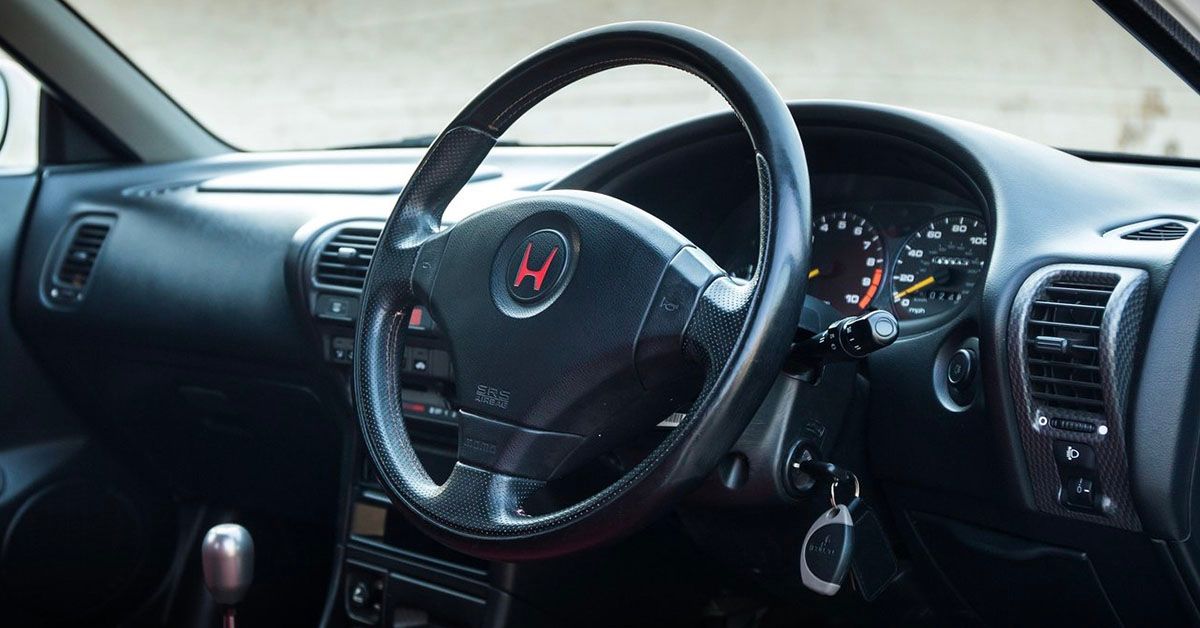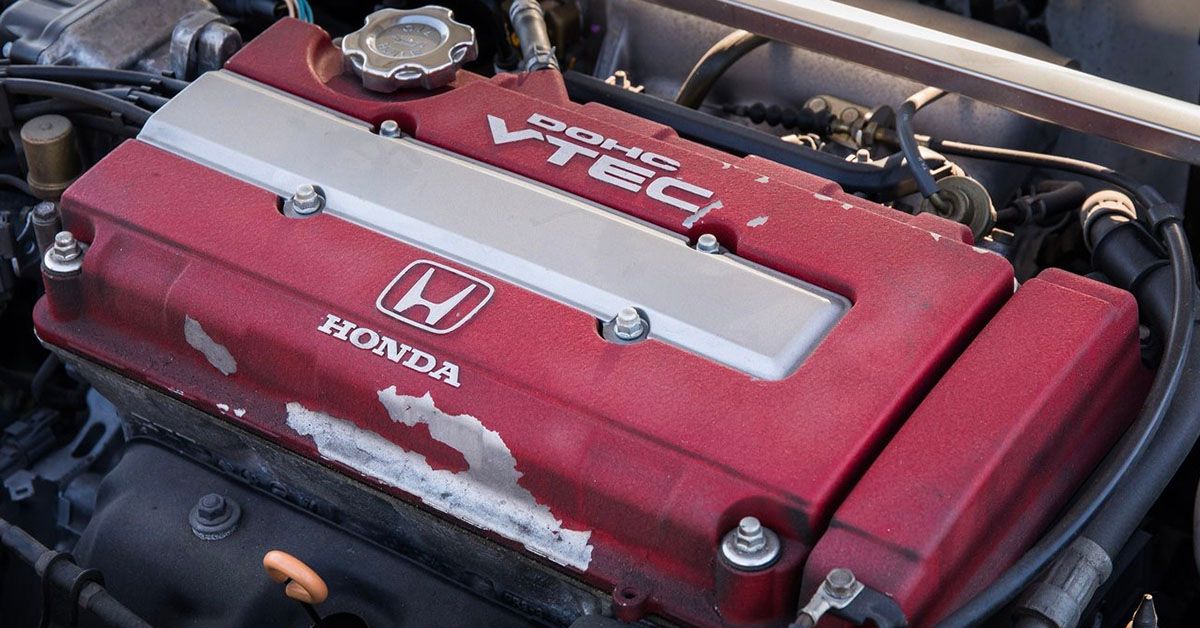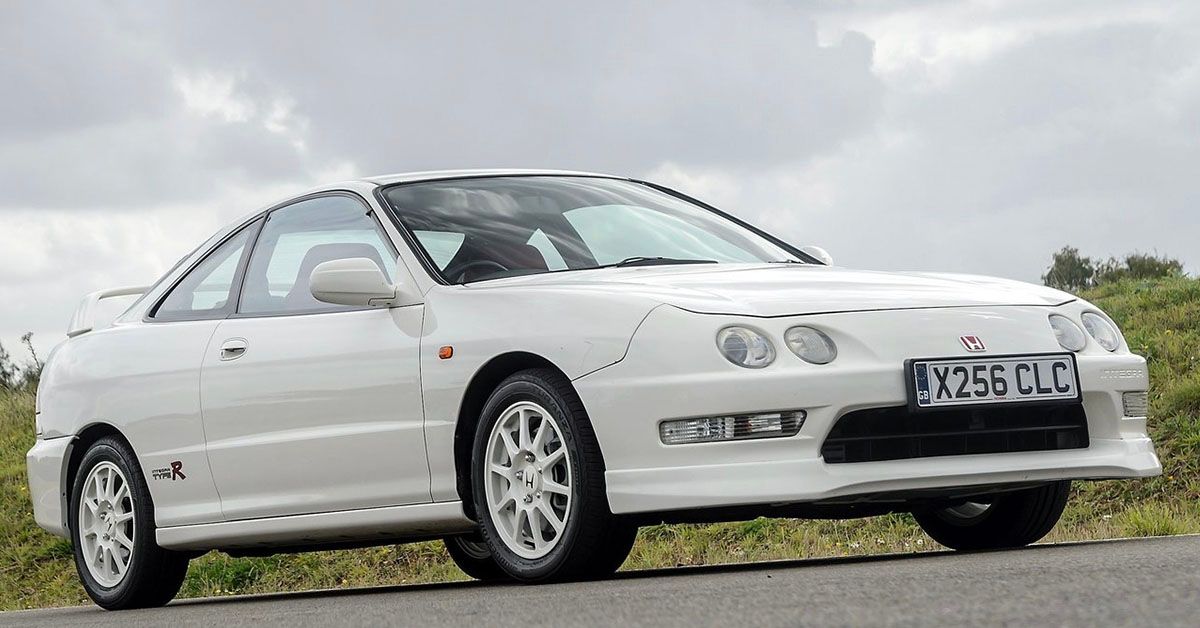Highlighted among one of the best automobiles of the 90s'. Many automobile magazines proclaimed the Acura Integra Type R to be the best Front-Wheel-Drive vehicle ever built.
The Integra Type R was constructed on a solid foundation and the third-generation Integra was also known as DC2. The Type R's beginnings may be traced back to Acura's spectacular Ferrari-rivaling NSX sports car. If the quite regular NSX was a fantastic all-rounder, the 1992 NSX-R, which was exclusively available in Japan, was a perfectly focused, narrow-minded beast when on the racetrack.
It was unconcerned about convenience, comfort, or image. All it bothered about was speed. It neglected radio, air conditioning, and other luxuries in order to perfect the formula for the NSX-R. The R, obviously, represents Racing, a nickname that the NSX-designers took literally. That was the mindset behind the creation of the first vehicle to bear the 'Type R' name tag: the DC2 Integra.
Honda used a lot of professional expertise and built the Type R in a very human-intensive method. Because of this, the Integra Type R was Acura's closest automobile to a race vehicle for the road. Much more when compared with any other affordable coupe. If Acura built a 911 RS 2.7, it would be the Integra Type R.
What does this legendary automobile have under its hood?
The B18C 1.8 liter DOHC VTEC engine of the ITR was an engineering marvel. It was mostly hand-built, and it included forged pistons made with aluminum with a molybdenum coating that reduced friction. It also had lightweight connecting rods, a stronger crankshaft, lighter intake valves, as well as hand-polished intake ports.
The highly precise tuning in this automobile enabled a really high compression ratio of 11.1:1, greater valve lift, and quicker cam timings. Breathing efficiency was also improved with enlarged intake manifolds and finer exhaust pipe welding.
The engine could crank up to 8400 rpm and generate 190 horsepower at 8000 rpm, or 20 hp more than the normal Integra engine. It also included Acura's revolutionary VTEC technology, which blended slow and fast cams on the very same camshafts.
Unlike so many other of Honda's VTEC engines at the time, the B18C engine, a longer stroke variation of the B16 engine seen in modern fast Civics, delivered a pleasing level of torque.
Although the maximum torque of 131 lb-ft did not arrive until when at 7300 rpm, there's already been 125 lb-ft at 3000 rpm. Aside from a close-ratio transmission and a featherweight chassis, performance was adequate to compete with numerous turbocharged rivals, such as the Fiat Coupé 190hp Turbo.
An exterior and Interior design that was tailored, for one thing, Speed!
The vehicle's exterior is colored Championship White, exactly like all the early Integra Type R vehicles, but what distinguishes Japanese-spec vehicles is the closed front-end with one-piece headlamps — a tweak that American aficionados pay nearly a $1,000 for.
A big Type R spoiler rests at the back of the car, and behind the fenders, a pair of body-colored 15-inch tires encased in fresh Yokohama Fleva rubber. To finish the look, there are red Acura logos featured on both the rear and front bumpers, and also "Type R" emblems on the side of the vehicle.
On the highway, the efforts put into the exterior of this Honda vehicle paid off. The car featured razor-sharp handling, excellent grip, and no torque steering. The driving experience was surprisingly flexible, so it enjoyed being used whether on smooth interstate or on rural roads.
Its high-revving motor was enthralling to use. The same can be said for the smooth and precise gearbox. Few automobiles in history have attained such a high degree of precision while also having an interesting personality. Even fewer were that reasonably priced.
On the inside of the 1995 Integra type R, you'll discover a set of Recaro front seats coated in black micro suede & fabric with red stitching and this complements the dash, floor mats, and door panels, all of which have the very same "Type R" concept.
In terms of technology, we must remember that this is a 1995 vehicle, so you're lucky to receive air conditioning and power steering, which usually came as an option at the time. It also includes a leather-wrapped steering wheel and a radio unit from Pioneer, but just don't expect airbags because it lacks them.
The primary nemesis of the sports car was weight, so the Integra was stripped of some components. The sound deadening was removed, the windshield was made thinner, and even its spare tire cover was thrown out.
The 1995 Integra Type R Still unsurprisingly retains its value today!
The Integra moniker will be revived in 2022 on a 4-door liftback centered on the Honda Civic for China and North America. Although RHD markets have yet to be verified, the resurgence may spark interest – and pricing – in DC2 Type Rs.
Prices for the 1995 Acura Integra Type R have skyrocketed in recent years, owing partly to the car's status as a true collector's item. Nevertheless, you can get one for as low as $17,000, but with higher miles on it or, been customized in some manner. Finding an untouched original is difficult, with locally delivered automobiles competing with many imported ones.
Sources: Honda, evo, whichcar
"type" - Google News
May 08, 2022 at 10:30PM
https://ift.tt/jtKnahX
Here’s Why The 1995 Integra Type R Is A JDM Legend - HotCars
"type" - Google News
https://ift.tt/nHVBNXq
https://ift.tt/bLVKpkF
Bagikan Berita Ini


















0 Response to "Here’s Why The 1995 Integra Type R Is A JDM Legend - HotCars"
Post a Comment